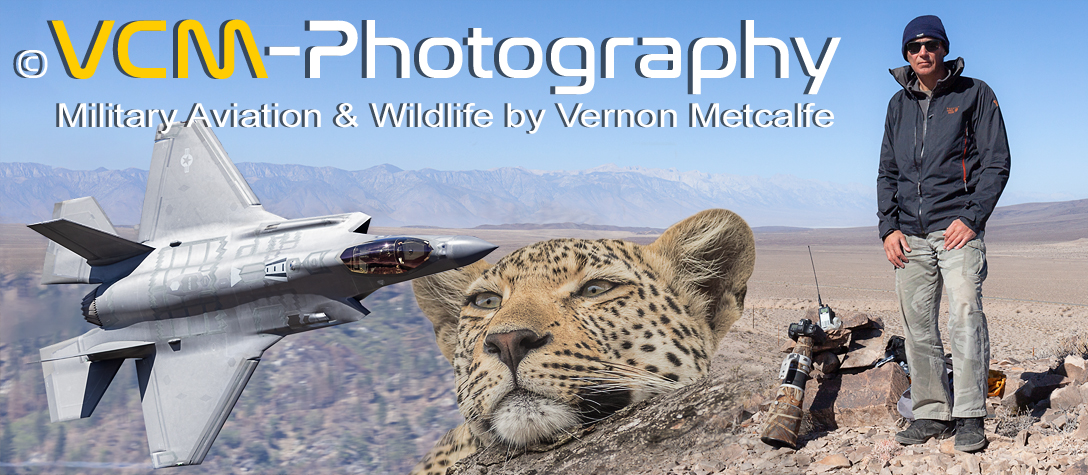To Contact Me



All the latest news and photography trip reports from my adventures around the U.K and abroad.
• June - India. Latest news ‑ The tigress
T‑84, Arrowhead dies and one of her cubs kills boy.
Ranthambhore National Park, Rajasthan.
• April - India. Wildlife safari
to Ranthambhore National Park, Rajasthan.
• May - USA. Low‑level photography
trip to the Sidewinder in California.
• February - UK. Low‑level
photography trip to Scotland (LFA14) & Lake District (LFA17).
• November - India. Wildlife safari
to Nagarhole National Park.
• October - USA. Low‑level photography
trip to the Sidewinder in California.
• September - UK. Low‑level photography
trip to the Lake District (LFA17). Exercise Cobra Warrior and Finnish Hornets.
• August/September - USA. Washington D.C
city break & Smithsonian Air & Space Museums.
• July - UK. Low‑level photography
trip to North Wales (LFA7), Lake District (LFA17) & RIAT 2024.
• June - UK. Elvington & Doncaster air museums.
Low‑level photography trip to the Lake District (LAF17).
• April - India. Wildlife safari
to Tadoba‑Andhari Tiger Reserve.
• March - USA. Low‑level photography trip
to the Sidewinder in California.
• November - India. Wildlife safari
to Bandhavgarh, Madhya Pradesh.
• September - USA. Low‑level
photography trip to the Sidewinder in California + X‑59 presentation at Torrance, L.A.
• July - UK. Low‑level photography trip
to North Wales (LFA7) & RIAT 2023.
• June - UK. Low‑level photography trip
to the Lake District (LFA17).
• May - UK. Low‑level photography trip
to the Lake District (LFA17).
• April - India. Wildlife safari
to Ranthambhore National Park, Rajasthan.
• February/March - USA. Low‑level
photography trip to the Sidewinder in California. Did not go as planned.
• November - UK. Low‑level photography
trip to the Lake District (LFA17). Chasing Swiss Hornets.
• October/November - India.
Wildlife photography trip to Bandhavgarh, Madyha Pradesh.
• September - USA. Low‑level photography trip
to the Sidewinder in California.
• August - UK. Air museum visits. Low‑level
photography trip to the Lake District (LFA17).
• July - UK. Low‑level photography trip
the Lake District (LFA17), North Wales (LFA7) & RIAT 2022.
• June - USA. Latest news ‑ Boeing F/A‑18E
Super Hornet crash.
• May - USA. Low‑level photography trip
the Sidewinder, California. Scouting new locations.
• April - UK. Air museum visits. Low‑level
photography trip to the Lake District (LFA17).
• March - UK. Air museum visits. Low‑level
photography trip to North Wales (LFA7) & the Lake District (LFA17).
• November - UK. Low‑level photography trip
to the Lake District (LFA17). Chasing Swiss Hornets.

